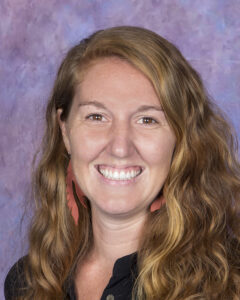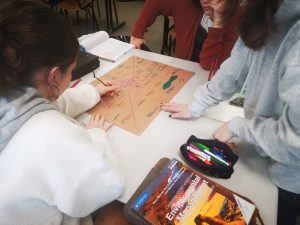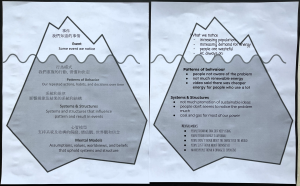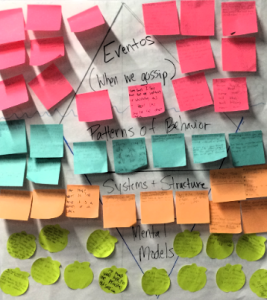In today’s world, simply solving problems as we come across them isn’t enough. We need to start practicing envisioning a future that goes beyond just fixing issues, one where sustainability is at the forefront of our actions. By daring to dream about the possibilities of a more sustainable world, we open ourselves up to innovative solutions and creative approaches that can lead to lasting change. It’s about more than just addressing current challenges; it’s about cultivating abundance for future generations. This requires us to not only think differently but also to act decisively. By embracing innovation, creativity, and proactive action, we can pave the way for a world where abundance and sustainability go hand in hand, creating a brighter future for all.
Nine years ago, I moved from a large piece of land in rural coastal North Carolina, where my parent’s property was surrounded by a National Forest. I had grown up with the naive sense that everyone had access to land, clean air, and low noise pollution. I moved from NC to Puerto Vallarta, Mexico; a relatively large coastal city with a population of 556,000 people. For the first time in my life I was living in a city with public transportation, tall buildings, and loads of traffic, and every home I lived in for the first 5 years had a tiny concrete patio in the back. I would visit friends in their homes, and it was the same, tiny concrete yards with the occasional patch of grass. I met my husband early on my journey in Mexico, after about a year and a half of moving to Puerto Vallarta. After we were married and over the years of us talking about our future, and where we wanted to settle down, I had this sinking feeling I would be living my adult life in a home with no grass, land, plants, or garden; in a city overpopulated and with a faint sense of a sustainable mindset.
Being an avid systems thinker, I’m always thinking about the different compass points, or running an event or idea down the systems iceberg, so I invited my husband to compass our vision together. We knew we wanted a few things: space away from other people, land to grow our own food, and a fully off-grid sustainable home. In terms of nature, we wanted to live with the land and use as few natural resources as possible. Economically, we are just starting our ‘adult’ lives, and didn’t have a huge budget to work with, so we were very careful in the planning, design, and timeline of our build. In thinking about society, we wanted to create a space to bring others together to show the possibility of thinking outside the box (or city in our case). And for wellbeing, we imagined the future we wanted for our physical, mental, and emotional health. We would have to sacrifice a few things to achieve it, but once we imagined what our future would look like, and thought it through holistically, we knew there was no turning back.
In March of 2021, we purchased 10 acres of land in the tropical deciduous forest of Cabo Corrientes, about 45 minutes outside of the city. We have 4 solar panels that power our entire home. We dug a well and pumped water once a week to a large cistern on top of the hill that then gravity feeds into our house and our irrigation system. All of our gray water goes into a filter system and storage tank that we use to water our grass. We have started planning our seasonal garden, and hope to get the first seeds in the ground in May. Our next project includes building camping pads down by the river, and starting inviting small family groups to stay with us and experience how off-grid living is possible for anyone.
One of the most powerful parts of this journey is how I’m able to take what I’ve done and share it with my students. I teach AP Environmental Science, in which we deep dive into Earth’s systems and how human interactions have damaged most of them. We also talk a lot about mitigation strategies, and what small actions we can take to help lessen the effects of climate change. It’s incredibly empowering to show my students how I’m doing it! It’s one thing to talk about solar panels, gray-water systems, water filtration, compost, and home gardens, and another thing to show them what I’m doing. If I can do it, so can they, and so can their families.
It all started with Imagining the future I wanted for myself and my family, imagining the example I wanted to set for my community and my students, and 3 years later, we are living the life we Imagined.

Author

Caitlin Barnum
Cait Barnum, originally from the crystal coast of North Carolina, now calls the beautiful Puerto Vallarta, Mexico home. She moved to Mexico 7 years ago with the Peace Corps, and found her way into teaching Middle and High School Sciences, as well as being our Sustainability and Systems Coordinator for at time, but now is leading the STEM+ Department. Folding in systems thinking tools and habits into the whole school community is a passion as well as a goal of hers.






